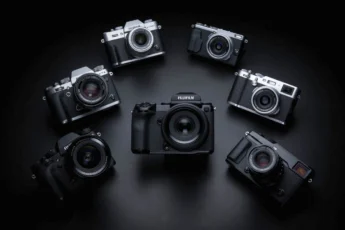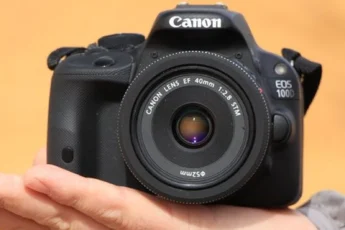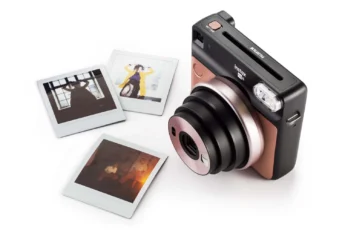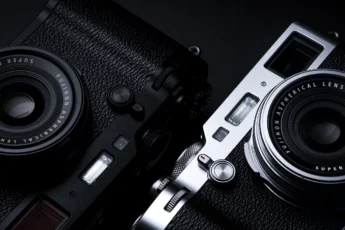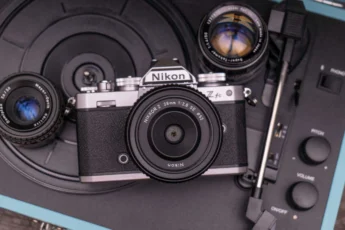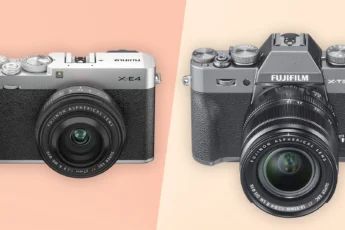The world of photography has been shaped by visionary camera brands that have pushed the boundaries of technology and innovation. From the early days of film cameras to the digital revolution, these manufacturers have played a crucial role in capturing life’s precious moments. Join us on a journey through time as we explore the pioneers and innovators who have left an indelible mark on the camera industry.
Step back to the late 19th century, when George Eastman introduced the first Kodak camera, making photography accessible to the masses. Fast forward to the mid-20th century, and witness the birth of iconic brands like Canon, Nikon, and Leica, each contributing their own groundbreaking advancements. From the introduction of the first 35mm film camera, the Leica I, to the launch of the game-changing Canon AE-1, these brands have consistently pushed the envelope.
As the digital age dawned, camera manufacturers embraced the new frontier, introducing groundbreaking technologies that would redefine the art of photography. Sony’s introduction of the first digital camera, the Mavica, in 1981, paved the way for a new era. Today, the market is filled with a diverse array of camera brands, each offering their own unique features and innovations, catering to the needs of photographers at every level.
- Understanding the Importance of Choosing the Right Camera Brand
- Factors to Consider When Selecting a Camera Brand
- Canon: A Closer Look
- Overview of Canon as a Camera Manufacturer
- Top Canon Camera Models
- Canon EOS R6 Mark II Review
- Sony: Innovations and Offerings
- Exploring Sony’s Contributions to the Camera Industry
- Highlighting Key Sony Camera Models
- Highlighting Key Sony Camera Models
- Sony α7 IV Review
- Nikon: Legacy and Excellence
- Delving into Nikon’s History and Expertise in Cameras
- Notable Nikon Camera Models
- Nikon Z 6II Review
- Conclusion: Choosing Your Perfect Camera Brand
Understanding the Importance of Choosing the Right Camera Brand
When embarking on your photographic journey, selecting the right camera brand is a decision that can have a profound impact on your creative pursuits. The brand you choose will not only influence the quality of your images but also shape your overall experience as a photographer. As Henri Cartier-Bresson, the renowned French photographer, once said, “Your first 10,000 photographs are your worst.” By investing in a reliable and reputable camera brand, you can ensure that those 10,000 shots are of the highest possible quality.
Professional photographers and enthusiasts alike attest to the significance of choosing the right camera brand. Award-winning photographer Jim Richardson swears by Nikon, stating, “I’ve used Nikon cameras for over 30 years, and they’ve never let me down. The image quality, durability, and intuitive controls make them my go-to choice for every shoot.” Similarly, Annie Leibovitz, known for her iconic celebrity portraits, relies on Canon for its exceptional color reproduction and versatile lens options.

Investing in a camera brand that aligns with your needs and preferences can make all the difference in your photographic journey. Whether you prioritize image quality, low-light performance, autofocus speed, or video capabilities, each brand offers unique strengths that cater to different photographers. By carefully considering your options and understanding the importance of your decision, you’ll be well on your way to unlocking your full creative potential.
Factors to Consider When Selecting a Camera Brand
With a myriad of camera brands vying for your attention, it’s essential to navigate through the options with a clear understanding of the key factors that will influence your decision. One crucial aspect to consider is the sensor size. Full-frame sensors, found in high-end cameras from brands like Canon, Nikon, and Sony, offer superior low-light performance and depth-of-field control compared to smaller APS-C sensors. However, APS-C cameras, such as those from Fujifilm and some Canon and Nikon models, provide a balance of image quality and affordability.
The image processor is another vital component that sets camera brands apart. Canon’s DIGIC processors and Sony’s BIONZ X engines are renowned for their speed, noise reduction, and color reproduction capabilities. When comparing camera models, pay close attention to the processor’s generation and its impact on overall performance.
Autofocus performance is a make-or-break factor for many photographers, especially those capturing fast-paced action or wildlife. Sony’s Real-time Eye AF and Canon’s Dual Pixel CMOS AF are industry-leading technologies that ensure precise and reliable focus tracking. Consider the autofocus system’s coverage, speed, and accuracy when evaluating different camera brands.
Ergonomics and customization options also play a significant role in your camera brand choice. Brands like Nikon and Canon offer extensive customization options, allowing you to tailor buttons and dials to your preferences. Fujifilm, on the other hand, is renowned for its retro-inspired designs and intuitive controls that appeal to photographers who value a more tactile shooting experience.
Lastly, lens compatibility is a long-term consideration when investing in a camera brand. Each brand has its own proprietary lens mount, and the availability and quality of lenses can vary significantly. Canon and Nikon offer an extensive selection of high-quality lenses across various focal lengths and apertures, while Sony’s E-mount system has rapidly grown to include a widerange of native and third-party options. Fujifilm’s X-mount lenses are praised for their sharpness and compact design, making them ideal for travel and street photography.
By carefully weighing these factors and aligning them with your specific needs and preferences, you’ll be well-equipped to make an informed decision when selecting your camera brand. Remember, the right choice will not only enhance your photography but also provide a platform for growth and experimentation as you progress in your creative journey.
Canon: A Closer Look
Overview of Canon as a Camera Manufacturer
Canon, a Japanese multinational corporation, has been at the forefront of the camera industry for decades. Founded in 1937, Canon has consistently delivered innovative and high-quality imaging products, earning the trust of photographers worldwide. From entry-level DSLRs to professional-grade mirrorless cameras, Canon offers a comprehensive range of products to suit every skill level and photographic genre.
One of Canon’s most significant contributions to the industry is the development of the EOS (Electro-Optical System) autofocus system. Introduced in 1987, the EOS system revolutionized autofocus performance, setting a new standard for speed and accuracy. Today, Canon’s Dual Pixel CMOS AF technology continues to push the boundaries of autofocus capabilities, particularly in the realm of video recording.
Top Canon Camera Models
Canon’s extensive camera lineup caters to a wide range of photographers, from beginners to seasoned professionals. The EOS Rebel series, such as the EOS Rebel T8i, offers an accessible entry point for those new to DSLR photography, with user-friendly features and impressive image quality. For enthusiasts and professionals, the EOS R5 and EOS R6 mirrorless cameras deliver exceptional performance, with high-resolution sensors, advanced autofocus, and 4K video capabilities.
Canon EOS R6 Mark II Review

The Canon EOS R6 Mark II is a full-frame mirrorless camera that builds upon the success of its predecessor, offering enhanced features and performance. With a 24.2-megapixel CMOS sensor and the powerful DIGIC X image processor, the R6 Mark II delivers stunning image quality and low-light performance. The camera’s advanced Dual Pixel CMOS AF II system provides lightning-fast and accurate autofocus, with improved subject tracking and eye detection.
One of the standout features of the EOS R6 Mark II is its impressive continuous shooting speed of up to 12 frames per second with the mechanical shutter and 40 frames per second with the electronic shutter. This makes it an ideal choice for sports, wildlife, and action photography. The camera also boasts 4K video recording at up to 60 frames per second, along with professional-grade video features like Canon Log and 10-bit 4:2:2 color sampling.
The EOS R6 Mark II’s ergonomic design and customizable controls make it a pleasure to use, while the weather-sealed body ensures durability in challenging shooting conditions. With its impressive performance, versatile features, and compatibility with Canon’s extensive RF lens lineup, the EOS R6 Mark II is a top choice for enthusiasts and professionals alike.
Sony: Innovations and Offerings
Exploring Sony’s Contributions to the Camera Industry
Sony, a Japanese multinational conglomerate, has made significant strides in the camera industry, particularly in the realm of mirrorless technology. Sony’s Alpha series of mirrorless cameras has revolutionized the market, offering professional-grade features and performance in compact and lightweight bodies. The company’s commitment to innovation has led to groundbreaking advancements in sensor technology, autofocus systems, and video capabilities.
One of Sony’s most notable contributions is the development of full-frame mirrorless cameras. The introduction of the Sony α7 in 2013 marked a turning point in the industry, offering the benefits of a full-frame sensor in a mirrorless form factor. Since then, Sony has continued to refine its full-frame mirrorless lineup, with models like the α7R IV and α7S III pushing the boundaries of resolution and video performance.
Highlighting Key Sony Camera Models
Sony’s camera lineup offers a wide range of options for photographers and videographers of all levels. The α6000 series, such as the α6400 and α6600, provides an excellent entry point into mirrorless photography, with APS-C sensors, fast autofocus, and 4K video capabilities. For professionals and advanced enthusiasts, the Sony α7 III and Sony α7 in 2013 marked a turning point in the industry, offering the benefits of a full-frame sensor in a mirrorless form factor. Since then, Sony has continued to refine its full-frame mirrorless lineup, with models like the α7R IV and α7S III pushing the boundaries of resolution and video performance.
Highlighting Key Sony Camera Models
Sony’s camera lineup offers a wide range of options for photographers and videographers of all levels. The α6000 series, such as the α6400 and α6600, provides an excellent entry point into mirrorless photography, with APS-C sensors, fast autofocus, and 4K video capabilities. For professionals and advanced enthusiasts, the Sony α7 III and α7S III offer unparalleled performance in both stills and video.
Sony α7 IV Review

The Sony α7 IV is a versatile full-frame mirrorless camera that builds upon the success of its predecessor, the α7 III. With a newly developed 33-megapixel back-illuminated CMOS sensor, the α7 IV delivers exceptional image quality and low-light performance. The camera’s advanced autofocus system, featuring Real-time Tracking and Real-time Eye AF, ensures precise and reliable focus on subjects, even in challenging shooting situations.
The α7 IV also excels in video recording, offering 4K video at up to 60 frames per second and full HD at up to 120 frames per second. With S-Log3 and S-Cinetone picture profiles, as well as 10-bit 4:2:2 color sampling, the camera provides professional-level video quality and flexibility in post-production. The camera’s 5-axis in-body image stabilization system helps to minimize camera shake, ensuring smooth and stable footage.
Other notable features of the α7 IV include a high-resolution electronic viewfinder, a fully articulating touchscreen LCD, and dual SD card slots. With its impressive image quality, advanced autofocus, and comprehensive video features, the Sony α7 IV is a top choice for photographers and videographers who demand versatility and performance.
Nikon: Legacy and Excellence
Delving into Nikon’s History and Expertise in Cameras
Nikon, a Japanese multinational corporation, has been a prominent player in the camera industry for over a century. Founded in 1917 as Nippon Kogaku K.K., Nikon initially focused on the production of optical instruments such as binoculars and microscopes. In 1948, the company introduced its first camera, the Nikon I, which marked the beginning of Nikon’s legacy in photography.
Throughout its history, Nikon has been at the forefront of camera technology, introducing groundbreaking innovations that have shaped the industry. The company’s F-mount lens system, introduced with the Nikon F in 1959, has become one of the most enduring and versatile lens mounts in the world. Nikon’s expertise in optics has earned the brand a reputation for producing some of the finest lenses available, cherished by photographers for their sharpness, color rendition, and bokeh.
Notable Nikon Camera Models
Nikon offers a diverse range of cameras to suit the needs of photographers at every level. The Nikon D3000 series, such as the D3500, provides an accessible entry point for beginners, with user-friendly features and excellent image quality. For enthusiasts and professionals, the Nikon D850 and Z7 II offer high-resolution sensors, advanced autofocus systems, and robust build quality.
Nikon Z 6II Review

The Nikon Z 6II is a versatile full-frame mirrorless camera that builds upon the success of its predecessor, the Z 6. With a 24.5-megapixel BSI CMOS sensor and the advanced EXPEED 6 image processor, the Z 6II delivers exceptional image quality and low-light performance. The camera’s fast and accurate autofocus system, featuring 273 phase-detection AF points, ensures precise focus on subjects, even in challenging lighting conditions.
The Z 6II excels in video recording, offering 4K UHD video at up to 60 frames per second and Full HD video at up to 120 frames per second. With N-Log and HLG (HDR) picture profiles, as well as 10-bit output via HDMI, the camera provides professional-level video quality and flexibility in post-production. The camera’s 5-axis in-body image stabilization system helps to minimize camera shake, ensuring smooth and stable footage.
Other notable features of the Z 6II include a high-resolution electronic viewfinder, a tilting touchscreen LCD, and dual memory card slots (CFexpress/XQD and SD). With its impressive image quality, advanced autofocus, and comprehensive video features, the Nikon Z 6II is an excellent choice for photographers and videographers who value versatility and performance.
Conclusion: Choosing Your Perfect Camera Brand
In the diverse and ever-evolving world of camera brands, finding the perfect match for your photographic needs and preferences is a journey of discovery. By understanding the unique strengths, innovations, and offerings of each brand, you can make an informed decision that will support your creative vision and help you capture the moments that matter most.
Whether you are drawn to Canon’s rich history and extensive lens lineup, Sony’s groundbreaking mirrorless technology, Nikon’s legendary optics and reliability, or Fujifilm’s distinct aesthetic and innovative features, each brand has something special to offer. As you embark on your photographic journey, remember that the best camera brand is the one that feels like an extension of your creative self, empowering you to express your unique perspective and tell your story through the lens.
As you grow and evolve as a photographer, your camera brand of choice may change, reflecting your changing needs and aspirations. Embrace the journey, experiment with different brands and models, and let your passion for photography guide you.
In the end, the camera brand you choose becomes a partner in your creative endeavors, a tool that helps you bring your vision to life. So, take the time to explore, research, and experience the offerings of each brand. Read reviews, engage with photography communities, and, if possible, get hands-on experience with different cameras to see which one feels most intuitive and inspiring to you.
Remember, your photography journey is unique, and the camera brand that suits you best may be different from what works for others. Trust your instincts, follow your passion, and let your chosen brand be a catalyst for your creativity. As you continue to learn, grow, and push the boundaries of your photography, your camera will be there to capture every step of the way, helping you create images that tell your story and leave a lasting impact on those who view them.
So, whether you find yourself drawn to the rich history and innovation of Canon, the groundbreaking technology of Sony, the legendary optics of Nikon, or the unique charm of Fujifilm, embrace your choice and let it inspire you to see the world in new and exciting ways. The journey of photography is one of endless possibilities, and with the right camera brand by your side, you’ll be ready to capture every moment, every emotion, and every story that the world has to offer.


